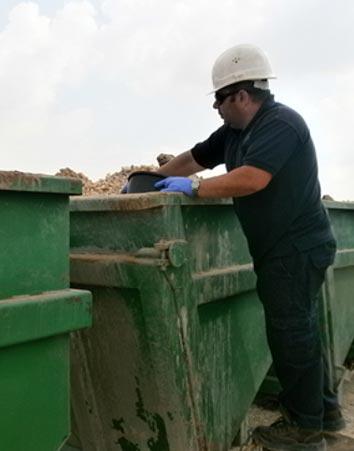Givot Olam creates waste as a product of the drilling and production site activities. Givot Olam works to minimize these wastes at source through its choice of raw materials, by reducing usage, and by recycling at its sites. Various categories of wastes are dealt with by the environmental department personnel as follows:
Industrial runoff and wastewater runoff
Industrial runoff – Industrial runoff is created primarily during drilling, in activities on the cemented operational surfaces. The runoffs are drained to collection pits and are periodically pumped to designated tanks for reuse in drilling, and with completion of the drilling are sent to a registered disposal site.
Rainwater runoff – Rainwater that is not on the operational area are directed back to nature via a drainage system, which has a mechanism for isolation in the case of an unforeseen situation. At exit points from the site, the water goes through an oil-water separator that is equipped with sampling ports. At the end of each rainfall, samples are taken for analysis to ensure conformance with environmental standards for runoff.
Drill cuttings
Drill cuttings are ground up rock fragments that come up to surface with drilling mud during drilling activities. Drill cuttings are separated in sieves from the drilling mud. Drilling mud is recirculated into the well, and the cuttings are routed to storage bins for disposal. The cuttings are sampled and sent for lab analyses in accordance with instructions from the Ministry for Protection of the Environment and the cuttings are disposed of accordingly.
Waste
Industrial waste – Industrial waste is comprised primarily of oil rags, filters, containers for oil products, paints, etc. These waste products are kept in designated bins and are periodically disposed of to recycling or disposal sites that are authorized by the Ministry for Protection of the Environment.
Hazardous materials – small amounts of hazardous materials that remain after well operations are carefully checked and categorized and sent to the relevant disposal sites.
